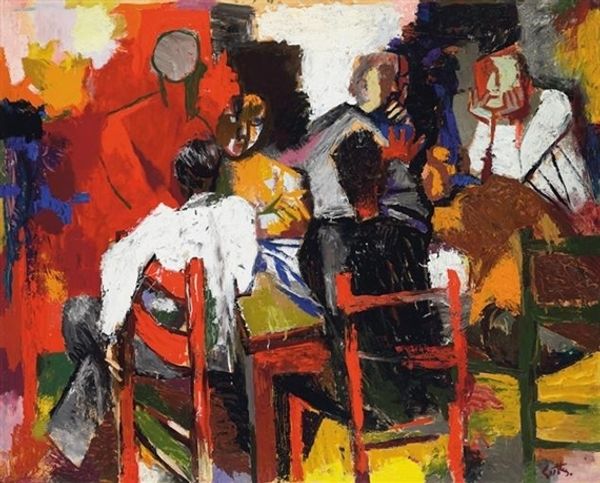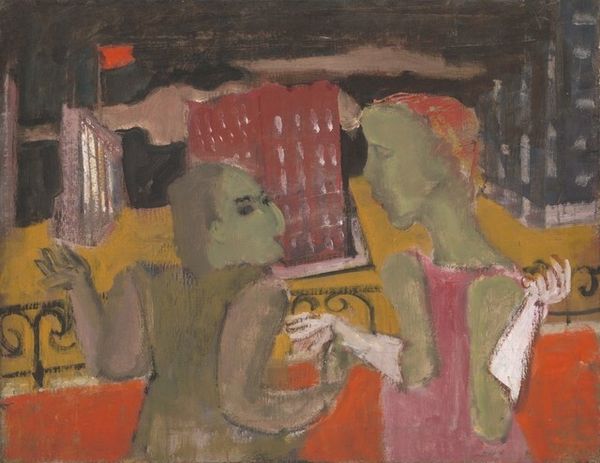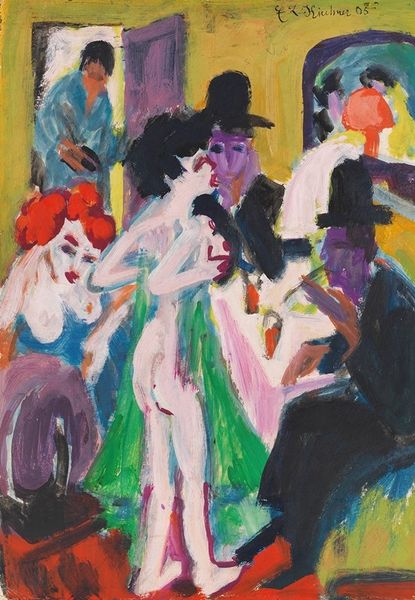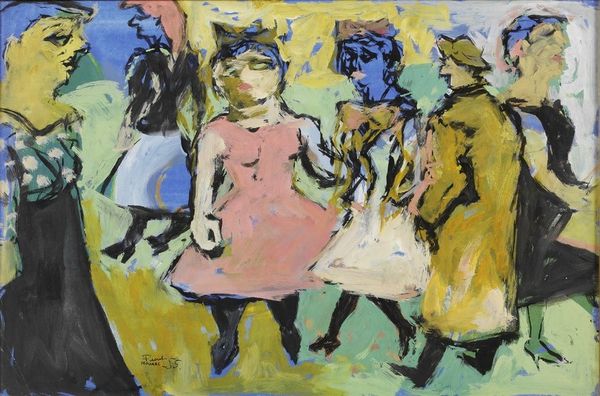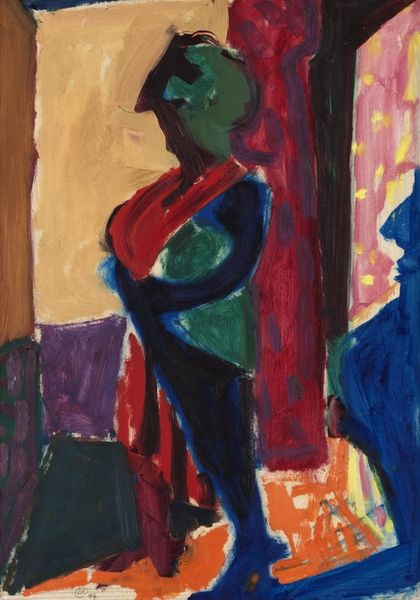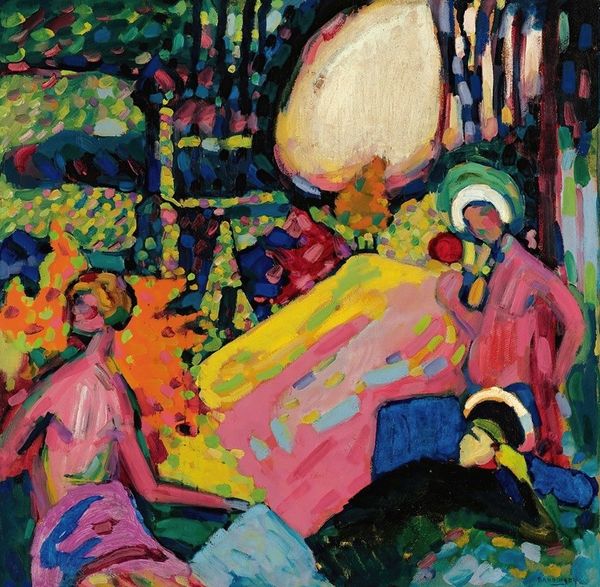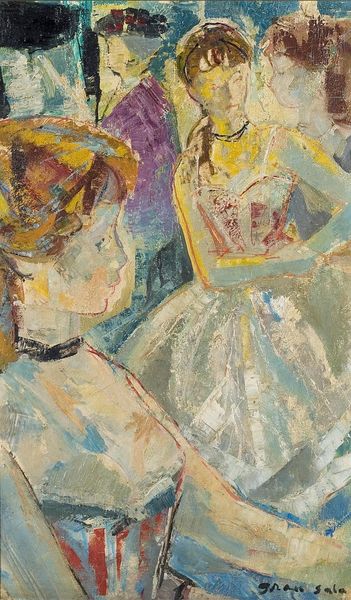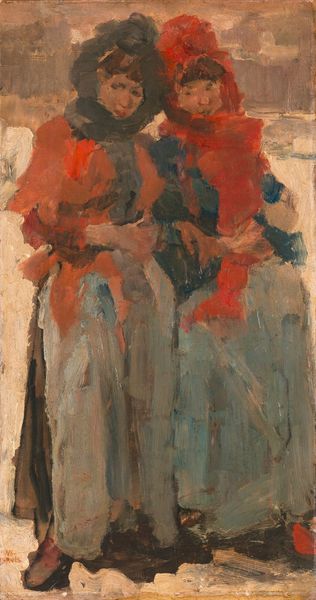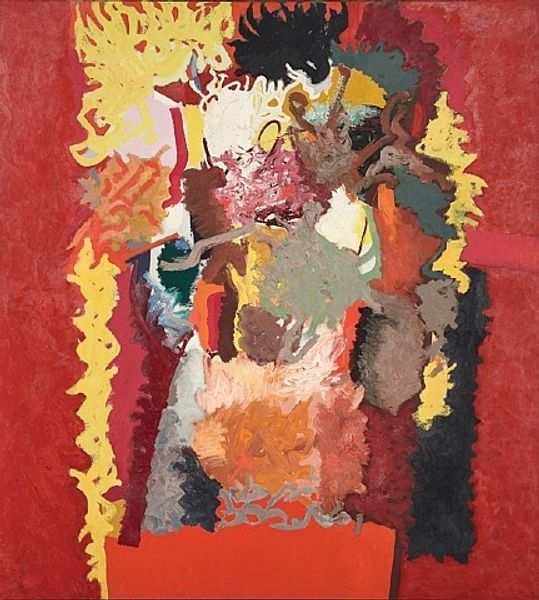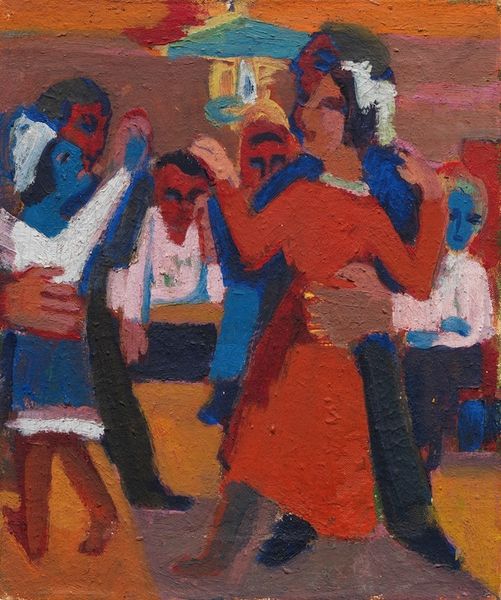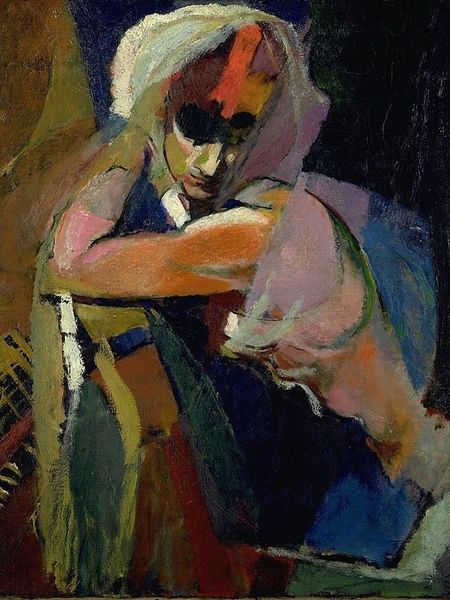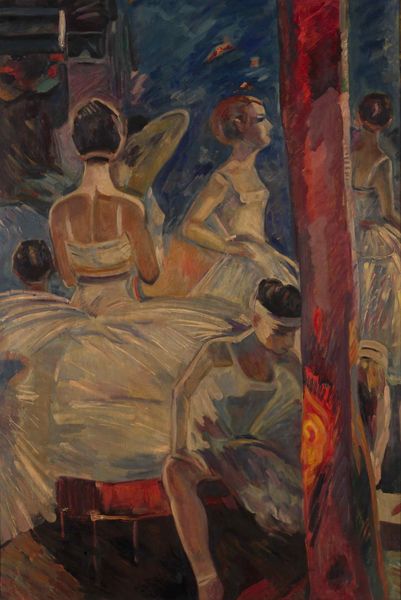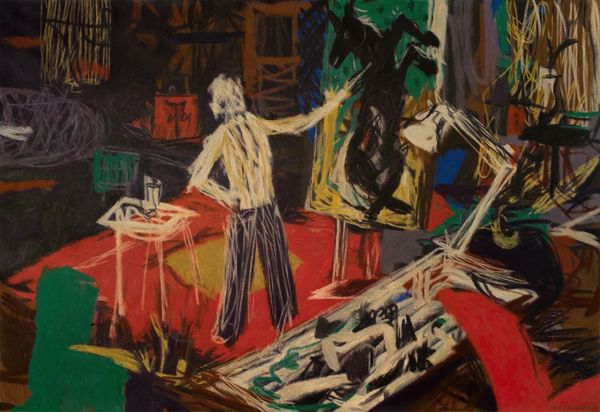
#
bay-area-figurative-movement
Dimensions: overall: 96.52 × 116.84 cm (38 × 46 in.)
Copyright: National Gallery of Art: CC0 1.0
Editor: This is "Sophomore Society" by David Park, from around 1953, painted with oils. The composition and clashing colors are intense. I'm really curious about the context for the artwork. What can you tell me about it? Curator: The post-war period in the U.S. saw many artists grappling with questions of identity and community. In figuration we confront not only the representation of the body, but also what bodies are deemed worthy of representation. Consider the seemingly lighthearted title juxtaposed against the painting’s uneasy atmosphere. How do the figures interact or not interact with one another? Editor: It seems as though they are a mix of solitary people in a shared space, all disconnected despite being physically close. There's very little interaction and very few of them seem to make eye contact. Curator: Exactly. This disquiet likely mirrors the anxiety in mid-century America, especially related to evolving social norms. The expressive brushwork adds another layer to the social commentary; David Park rejected non-objective art, opting instead to explore a uniquely accessible, Bay Area figurative painting style that welcomes introspection. Editor: What I thought was just poor blending of colors now looks like it's meant to make you uneasy. It really shifts how I understand the mood of this work, considering what was happening socially at the time. Curator: Right. It prompts us to question what lay beneath the veneer of mid-century American social life. How does the title inform your understanding now? Editor: Thinking of 'sophomore society', a club implying exclusivity or some sort of youthful community... yet the people in the painting are disengaged, some seeming isolated. That really sheds light on how communal space doesn't automatically guarantee inclusion. It’s actually thought provoking! Curator: It reveals the painting's commentary on belonging and exclusion. It encourages critical discussion about society’s hidden undercurrents.
Comments
No comments
Be the first to comment and join the conversation on the ultimate creative platform.
